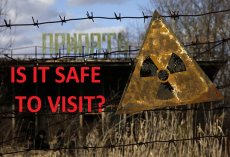News
§
High level waste (HLW)
Highly radioactive fission products and transuranium elements (usually different from
plutonium), being generated during reactor operation and contained in spent fuel. They
could be separated by processing spent fuel and vitrified for long-term storage, or spent
fuel containing them could be considered as high level radioactive waste.
§
Intermediate level waste (ILW)
Intermediate level waste (ILW) contain concentrations of radioisotopes higher than low
level waste (LLW), and they will may need shielding. Basically, they are generated
from nuclear industry and contain resins, chemical sediments and metal fuel cladding,
as well as some activated structured materials of the core remained after reactor
decommissioned.
§
Low level waste (LLW)
Low level waste (LLW) is medium radioactive material usually removed by means of
incineration and disposal. They are generated from hospitals and industry, as well as
nuclear-fuel cycle, and consist of paper, rags, instruments, cloth and filters containing
small amount of shortest lived radioactivity.
§
Natural uranium
Uranium discovered in the nature containing 99.3% of U-238, 0.7% of U-235 and
small amount of U-234. Natural uranium could be used as fuel in heavy-water reactors
as moderator.
§
Plutonium
Transuranium element being generated in nuclear reactor at neutron capture. It has
several isotopes, some of which are capable for fission, but some are subject to
spontaneous fission emitting the neutrons.
§
Transmutation
Atom transformation of one element into atoms of another one by means of neutron
attacking causing neutron capture.
§
Background radiation
Natural ionizing radiation, by which each person is exposed. It origins in Earth crust
(including radon) and comes from space.








